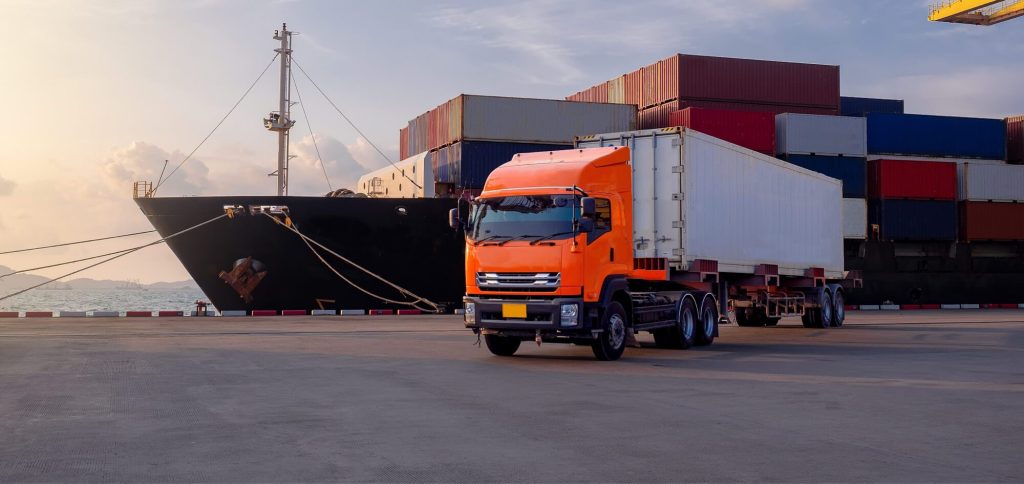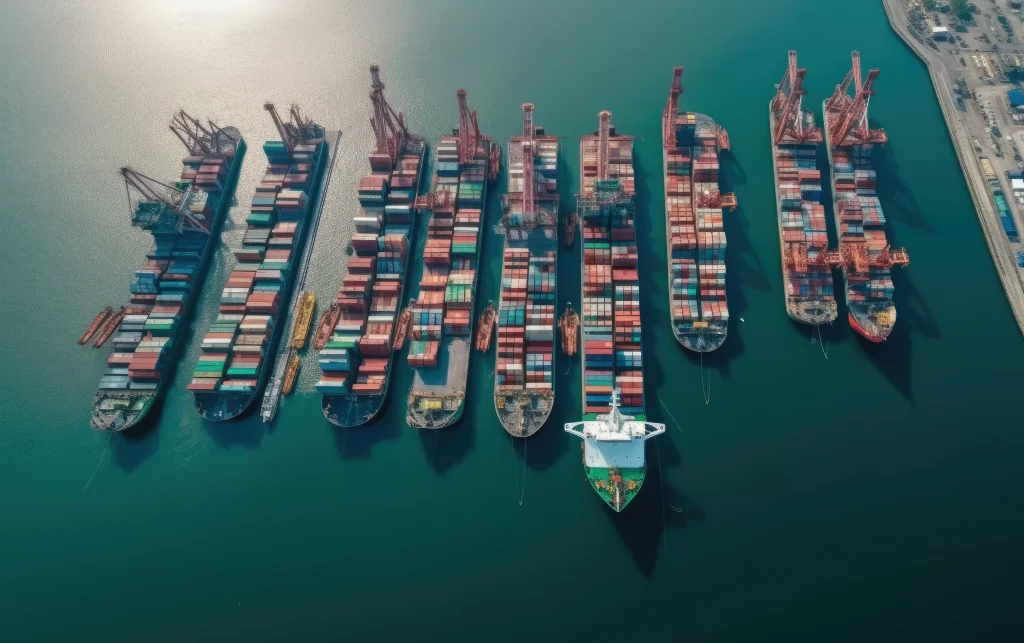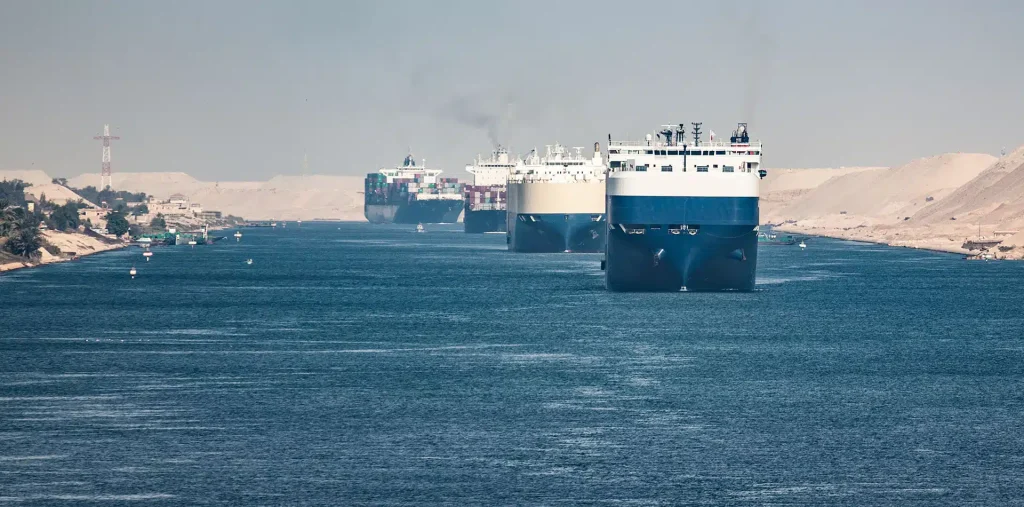“There is no reason and no way that a human mind can keep up with an artificial intelligence machine by 2035.”
Gray Scott
Did you know that even as you read this, chief supply chain executives and several businesses still struggle to optimize their decision-making processes and manage disruptions as well as they could?
It’s called “End-to-end visibility” — which also extends over to “limited supply chain visibility”. If that’s the case, most businesses are sailing blind into rough seas.
A Supply Chain Worldwide Survey by GeoDis reveals that more than 75% of CSCOs and business leaders who have anything to do with supply chain suffer from limited supply chain visibility. This is despite the fact that 66% of businesses dedicate anywhere between 5% to 15% of their turnover to supply chain spends.
This often turns into “flying blind” with zero visibility beyond tier 1 relationships with direct vendors.
Using technology and data available to us, we could do better. You do need help though.
The GeoDis survey also reveals that more than 70% of firms consider their supply chains to be extremely complex.
If Ocean visibility and supply chain trends are anything to go by, technology does help transform supply chains. Not all businesses are there yet, though.
According to research by McKinsey, more than 60% of supply chain managers who adopted artificial intelligence technology, ai-driven software, or ai-driven processes saw a phenomenal decrease in their costs specifically from superior data and insights related to spend analytics, logistics, operations, and more.
Here a few game-changing ways artificial intelligence helps transform supply chains:
Tackle Supply Chain Constraints. Stay Competitive
The volatile market conditions, radical transformations in demand patterns and varying consumer behaviour patterns along with actual supply chain disruptions usher in the need for businesses to embrace technologies driven by artificial intelligence.
Not just because it’s fancy, but also because it’s the way forward to handle complexities.
Artificial intelligence helps:
- Keep a tab on costs and prevent haemorrhaging cost increases (due to raw materials, labour, and so on)
- Take on global competition but still stay ahead of the game
- Optimize Efficiency
- Quickly adapt (and even thrive) in the face of ever-changing customer expectations on quality and service
- Reduce transit times, boost situational awareness, and work for better maritime safety
- Develop and use a reliable logistics infrastructure
- Maintain a competitive advantage (more than 57% of businesses surveyed perceive Supply Chain as a global advantage)
Artificial intelligence helps businesses manage long-lasting, disruption-proof supply chains. Technology helps iterate and work on improving quality and compliance, brings in flexibility to supply chain management, enables cost savings, and helps navigate logistic complexity.
Predictive Analytics
While there are several areas and instances where Artificial Intelligence helps, certain use cases are truly beneficial for businesses such as consumer behaviour, sales patterns, shopping insights, sales forecasting, and so on.
IBM’s report on the new direction of Omnichannel Era – referring to IDC – reveals that the convergence of cloud, analytics, social and mobile technologies—combined with generational expectations—is presenting a hyper disruptive cycle not seen in last 20 to 25. years.
More than 94% of retailers — not including B2B businesses and several other businesses — seeking to bet the farm on omnichannel marketing and omnichannel fulfilment as a priority, integrated machine learning and artificial intelligence systems helps with inventory management, inventory control, predicting and working with stock levels, manage material (surplus or shortage), and more.
More specific to our interest, here at Gatehouse, AI and machine learning driven predictive analytics helps supply chain on the whole.
For instance, if you are a business, an importer, a logistics company, or a vendor, you don’t want to guess.
You don’t want to ask “Where’s my vessel?” or “When will my container arrive?”
What you need is something like Discharge Prediction — a Gatehouse service that helps you optimize your pickup planning, let you provide a better service to your end customers (accurate and fast delivery of shipments), avoid demurrage fees, establish contingency plans, and more).
Or, consider our Predictive Gate Out feature — which takes various factors affecting shipments which include vessel arrival, container unloading, customs clearances, port congestion, and more to precisely give you real-time transportation visibility solutions.
Once the boat sails, there’s a lot that can go wrong.
Making data-driven decisions with relevant, timely, and accurate data is critical for aspects of business and logistics such as fleet management, preventive maintenance, route mapping, route visibility, and so on.
Port logistics
Gridlocks at ports lead to a cascading effect, horrifyingly similar to urban traffic crawl but is only more expensive.
You could save billions with the right data.
When it comes to port logistics, dealing with ongoing issues with port congestion, you’d need the right data, make timely decisions, take advantage of expansive and accurate ocean visibility data while using trustworthy data sets, and more.
Next Port — our Data as a Service (DaaS) Solution — integrates directly into your existing systems via an API and helps you answer questions such as:
- The status of any particular ship, and whether or not its heading to the next port of call?
- What are the vessels arriving at any particular port, at any given time?
- What’s the Estimated Time of Arrival; (ETA) of a ship, at a given port?
On the aspect of port logistics, Next port allows you to make decisions by increasing visibility of all commercial vessels, vessel traffic, and vessel destinations.
Destination Predictor
Did you know that the cost of acquiring a new customer is anywhere between 5 to 25 times more expensive than keeping an existing one?
According to Voxware,
- 69% of customers are much less or less likely to shop with a retailer in the future if an item they purchased is not delivered within two days of the date promised
- 16% of customers will abandon shopping with a retailer altogether if they receive an incorrect delivery just one time, and
- 14% of customers will dump a brand or business if they receive a late delivery just one time.
A customer who shopped for a box of cereals has everything to do with everything from production, inventory management, shipping, logistics, the vessels, containers, ports, people, data, technology, and more. That, in essence, is your supply chain in action.
eCommerce retailers, traditional retailers, B2B businesses, and even individuals are affected by simple questions such as: “Where is my ship? When will it arrive?”
That’s the question that Gatehouse Destination Predictor tries to answer by using a sophisticated machine learning algorithm, data, artificial intelligence, and more.
Vessel history, position, SOG, heading, and other pillars of data are used to provide an accurate ETA (Estimated time of arrival) for each vessel or even a container.
Updated every 30 minutes, our Destination predictor predicts vessel arrivals (with over 90-% accuracy) and provides you with personalized filters and arrival lists in one place, accessible all the time.
Data is good for business.
What do you think are some of the incredible advantages of technology such as artificial intelligence, machine learning, and IoT for supply chain management, shipping, and business?
Tell us all about it.




